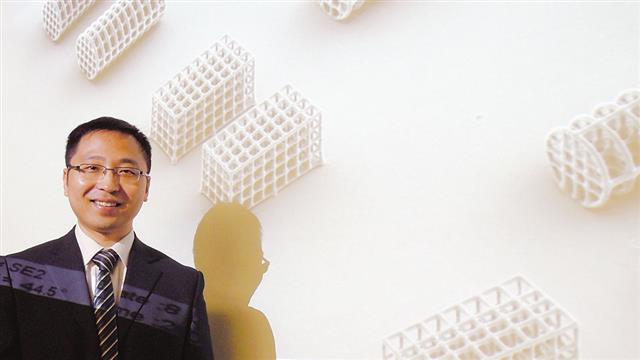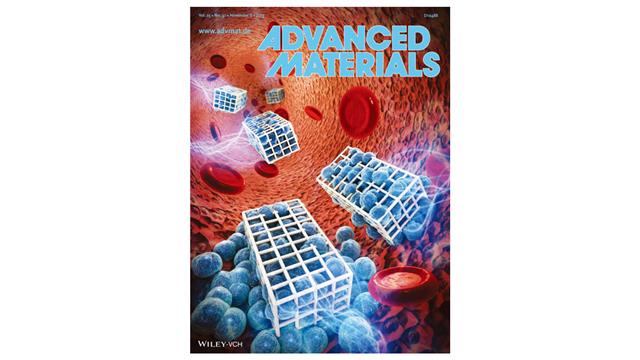In the famous speech 'There's Plenty of Room at the Bottom' delivered in 1959, Richard Feynman, renowned American physicist and Nobel laureate in physics, foretold that a small machine would be invented that could travel to the heart of the body through a blood vessel and examine the organ. He described this as 'swallowing the surgeon'. The stirring speech inspired the development of a brand new research area—nano technology.
Feynman's wild idea has materialized, to a certain extent, after four decades of research. Applying a similar concept, a capsule-like endoscope came into being around 2000 to capture images inside the small intestine. The pill-sized video capsule is advanced through the digestive tract by the peristalsis of the intestine while the technology of controlling the device's track is still unfledged.
Prof. Zhang Li of the Department of Mechanical and Automation Engineering, in collaboration with researchers from the Daegu Gyeongbuk Institute of Science and Technology (DGIST), Korea; and ETH Zurich, Switzerland, has innovated a new magnetically manipulated microrobot capable of transporting an appropriate volume of cells and therapeutic drugs to specific areas of the human body—a great leap forward in the development of wirelessly-controlled medical microrobots. The research results have been featured as the cover story in Advanced Materials released on 6 November.
The development of microrobot requires interdisciplinary knowledge including mechatronics, materials science, biology, control and automation, etc. The device—with 100 microns in length and 40 in width—is as tiny as the radius of the cross-section of a strand of hair. It is almost impossible to install mechatronic components such as a motor. Researchers found that utilizing magnetic fields to actuate the robot, which is coated with nickel for magnetic actuation, and with titanium to ensure biocompatibility for possible in vivo applications in blood vessels or bodily fluids is a promising method.
However, how should the microrobot move in bodily fluid? Professor Zhang made reference to the movement of microorganisms and took into account certain variables including the viscosity and velocity of the liquid, the shape and magnitude of the device, as well as the limitations of applying magnetic field as field strength decays rapidly with increase in distance from source. With a series of careful experiments and complex calculations, he found that rotating helical propellers is likely one of the best choices for in vivo applications.
The shape of the device has been improved upon continuously. Most of the early microrobots were spiral-shaped with a small body to carry drugs. In his recent research, Professor Zhang and his collaborators constructed photocurable polymer three-dimensional scaffolds with controllable porosity for different treatment purposes. He said the new design made a breakthrough in the quantity of drug delivered. 'I want to design a truck, not a car.' Moreover, having a three-dimensional structure for cell culture, compared to two-dimensional in which the cell is cultured on a flat surface, is important for sustaining the structural and functional complexities of the cells because it is much closer to the in vivo environment.
The new technology has the potential to revolutionize minimally invasive medical treatment and can lead to targeted treatment of various diseases such as cancer, cerebral infarction and retinal degeneration. Professor Zhang said traditional treatment involves surgery which poses risks to patients. The new method allows accurate cell and drug delivery to the needed part directly for tissue regeneration and targeted therapy which can prevent side-effects triggered by invasive methods.
However, the technology is still in its infancy and the next step is to test the microrobot on animals and later on humans. Professor Zhang estimated that it will take at least a decade to put it into trial run. Professor Zhang has devoted himself to the development of magnetic micro- and nanorobots. He is currently leading the CUHK research team to improve the performance, intelligence and design of these micro-devices by paying close attention to their locomotion and dynamic properties in fluid. His research results have been highlighted in a number of renowned journals, such as Lab on a Chip, Advanced Materials, and Materials Today.




